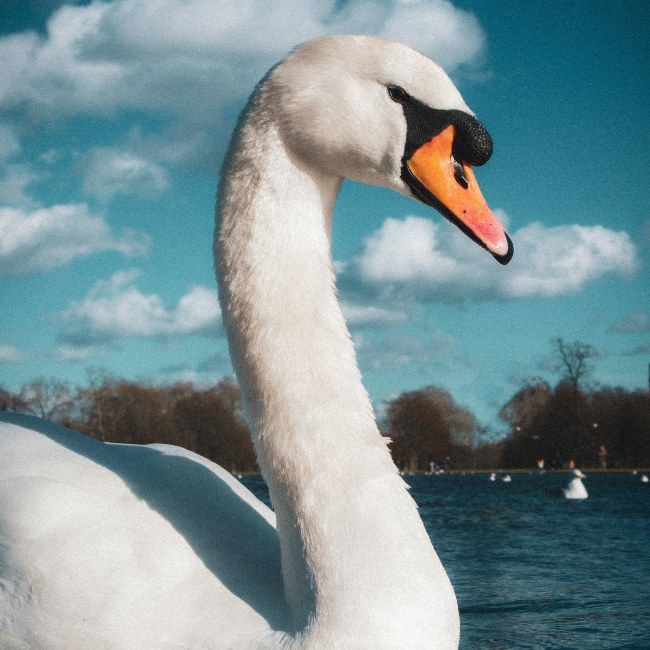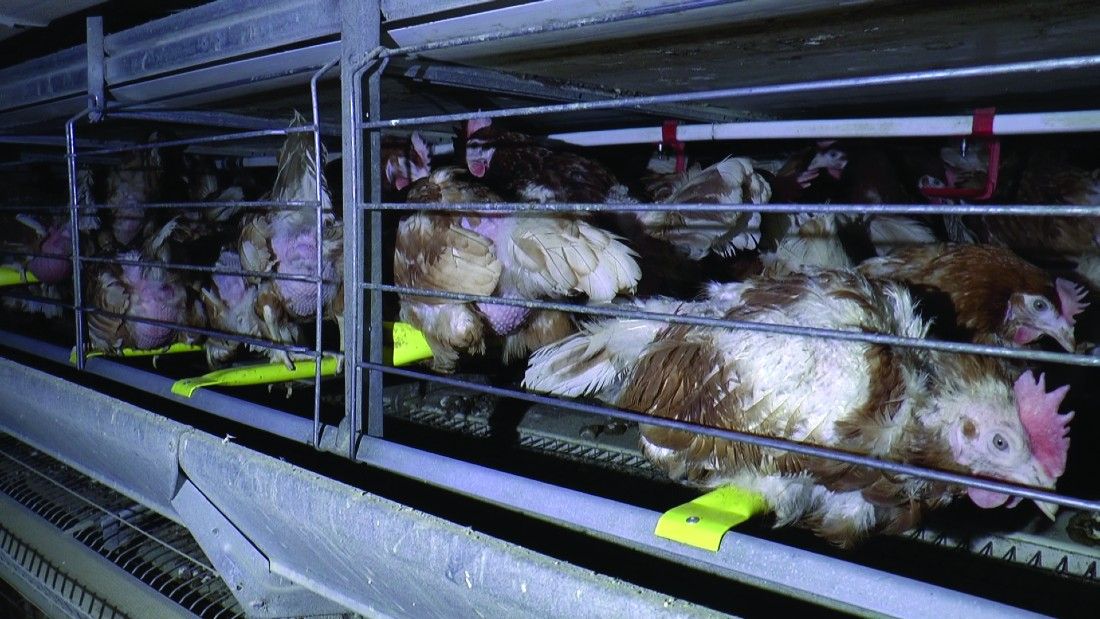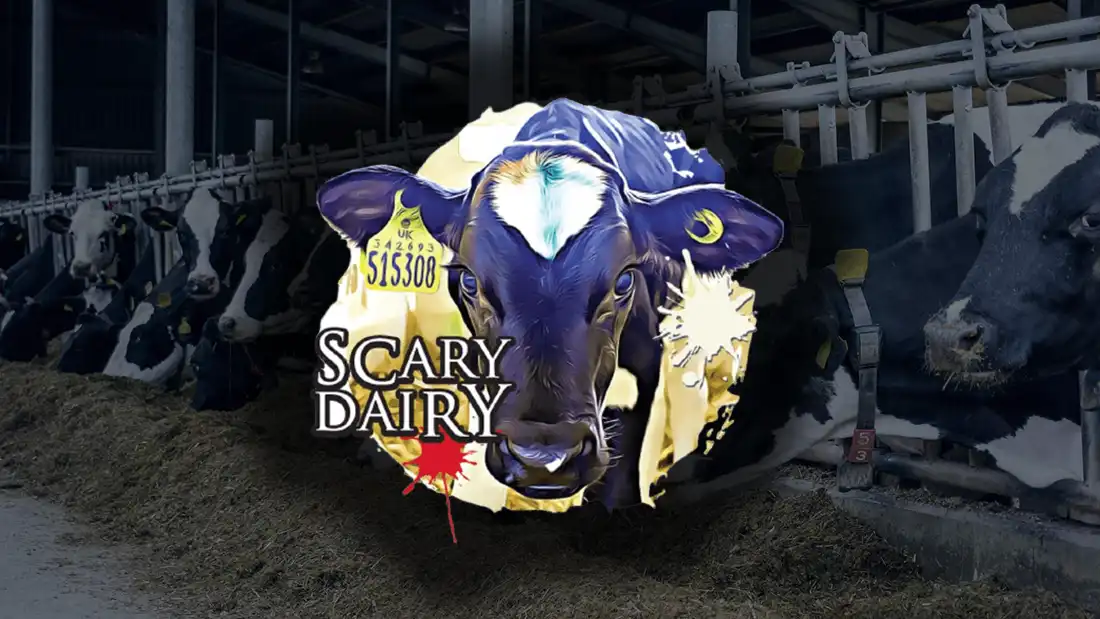Bird Flu – Waiting in the Wings

Avian influenza (bird flu) viruses are among the most dangerous viruses that can affect humans, with a case fatality rate ranging from around 30 to 60 per cent. Seasonal flu kills around 0.1 per cent (one in 1,000) of those infected. In an average year, this means 7,000 to 9,000 people in the UK die of complications caused by seasonal flu. In a bad year, more than 20,000 people may die.
Some strains of bird flu can spread easily between birds, causing illness with a high death rate among poultry populations. In some cases, they can lead to severe illness and deaths in humans too, usually where there has been close contact with infected birds. While it is still relatively difficult for people to catch bird flu viruses from other people, there have been a limited number of reports of person-to-person infection. If a bird flu virus mutates and becomes as easy to catch as a common cold, seasonal flu or Covid-19, we will be in deep trouble.
Bird flu is a classic example of a zoonotic disease and most pandemics can be traced back to viruses containing genes of avian origin, including the 1918 Spanish flu, 1957 Asian flu, 1968 Hong Kong flu and 2009 swine flu pandemics. Prior to Covid-19, most scientists thought the next pandemic would be caused by an avian influenza virus emerging from a poultry or pig farm.
There are four types of influenza viruses: A, B, C and D.
Bird Flu is cause by influenza A viruses that do not normally infect people but have the potential to do so, and that is the worry. Most human infections with avian influenza A viruses have occurred following direct or close contact with infected poultry leading to concerns that a bird flu virus from a factory farm may cause the next pandemic.
Influenza A viruses are the only ones known to cause flu pandemics. A pandemic can occur when a new and different influenza A virus emerges that both infects people and can spread easily between them. Influenza A viruses are divided into subtypes based on two proteins on the surface of the virus: hemagglutinin (H) and neuraminidase (N). There are 18 different H subtypes (H1 to H18) and 11 different N subtypes (N1 to N11). The H subtype determines the ability of the virus to bind to and enter cells, where multiplication of the virus then occurs. The N subtypes are responsible for the release of newly formed viruses from the cells. Some subtypes have low pathogenicity (the capacity to cause disease) and others have high pathogenicity.
While there are potentially 198 different influenza A subtype combinations, only 131 have been detected in nature. Only two influenza A subtypes are currently in general circulation among people: H1N1 and H3N2. Influenza A viruses can infect other species – including ducks, chickens, pigs, whales, horses, seals and cats.
Influenza B is only found in humans and causes seasonal flu outbreaks but not pandemics. During the flu season, type A and B viruses (and different subtypes of A) circulate and cause flu in people.
Influenza type C infections generally cause mild illness and are not thought to cause human flu epidemics.
Influenza D viruses primarily affect cattle and are not known to infect or cause illness in people.
Source: 2CDC. 2019. Types of Influenza Viruses. Available: https://www.cdc.gov/flu/about/viruses/types.htm
The viruses responsible for all these pandemics contained genes of avian origin but also contained elements of human-adapted viruses (like the ones that cause seasonal flu). Until recently there was only limited evidence that a wholly avian influenza virus could directly infect humans, but in 1997, 18 people were infected with the avian influenza virus H5N1 and six of them died.9Taubenberger JK. 2006. The origin and virulence of the 1918 “Spanish” influenza virus. Proceedings of the American Philosophical Society. 150 (1) 86-112. Chickens in poultry markets were found to be the source of these purely avian H5N1 viruses.10Shortridge KF, Zhou NN, Guan Y et al. 1998. Characterization of avian H5N1 influenza viruses from poultry in Hong Kong. Virology. 252 (2) 331-342.
Some records suggest that bird flu, previously known as “fowl plague”, may have been infecting domestic birds as far back as the 1870s. However, it’s widely accepted that it has been infecting poultry at least since the late 1950s.11Lycett SJ, Duchatel F, Digard P. 2008. A brief history of bird flu. Philosophical Transactions of the Royal Society of London. Series B. Biological Sciences. 24, 374 (1775) 20180257. Bird flu viruses are described as being low or highly pathogenic depending on how lethal they are to chickens. From 1959 to 1995, the emergence of highly pathogenic viruses was recorded on 15 occasions, but losses were minimal. In contrast, between 1996 and 2008, highly pathogenic viruses emerged at least 11 times and four of these outbreaks involved many millions of birds.12Alexander DJ and Brown IH. 2009. History of highly pathogenic avian influenza. Revue Scientifique et Technique. 28 (1) 19-38.
Bird flu became the focus of intense international attention in 1996 when a highly pathogenic strain of H5N1 emerged in farmed geese in the Guangdong province in China, killing more than 40 per cent of the birds it infected. By 1997, it had spread to poultry farms and live-poultry wet markets in Hong Kong – where it infected 18 people, leading to six deaths. To try and stop the outbreak, the Government ordered the slaughter of more than 1.5 million chickens. Writing in the journal Nature, science writer Cassandra Willyard said: “On that occasion, there was no pandemic – no more human cases emerged. But in 2004, the World Health Organisation warned that the next pandemic could result in the deaths of up to seven million people worldwide.”13Willyard C. 2019. Flu of the Farm. Nature. 573 (7774) S62-S63.
H5N1 re-emerged in 2003. In addition to further human cases in Hong Kong, there were poultry outbreaks in mainland China and other countries in Southeast and East Asia. There have now been in the region of 15,000 poultry outbreaks and tens of millions of birds have died of H5N1 influenza, and hundreds of millions of birds have been slaughtered to limit the spread of disease.
To date, there have been almost 900 laboratory-confirmed cases of H5N1 in humans and 456 people – mostly teenagers and young adults – have died.14WHO. 2022. Surveillance – Avian influenza. Available: https://www.who.int/westernpacific/emergencies/surveillance/avian-influenza That’s 53 per cent of those infected! Deaths have occurred in Azerbaijan, Bangladesh, Cambodia, Canada, China, Djibouti, Egypt, India, Indonesia, Iraq, Lao People’s Democratic Republic, Myanmar, Nepal, Nigeria, Pakistan, Thailand, Turkey and Vietnam.

Wild water birds (including geese, swans, gulls, terns and sandpipers but especially ducks), are the natural hosts of low pathogenic bird flu viruses. Infection in these birds is not only typically low pathogenic but can be asymptomatic.4Lycett SJ, Duchatel F, Digard P. 2008. A brief history of bird flu. Philosophical Transactions of the Royal Society of London. Series B. Biological Sciences. 24, 374 (1775) 20180257. Infected birds shed large quantities of virus in their faeces, saliva and nasal secretions26WHO. 2007. Review of latest available evidence on potential transmission of avian influenza (H5N1) through water and sewage and ways to reduce the risks to human health. Available: https://apps.who.int/iris/bitstream/handle/10665/204275/WHO_SDE_WSH_06.1_eng.pdf?sequence=1&isAllowed=y [Accessed 30 May 2022]. and so it is easily spread between them in water. It is thought that bird flu viruses have coexisted in perfect harmony with their natural hosts for hundreds, if not thousands, of years without substantial change.27Webster RG, Peiris M, Chen H et al. 2006. H5N1 outbreaks and enzootic influenza. Emerging Infectious Diseases. 12 (1) 3-8.
However, when viruses cross the species barrier (spillover) to new hosts, they adapt and change to suit their new host. This may result in a virus becoming more virulent.28Kuiken T. 2013. Is low pathogenic avian influenza virus virulent for wild waterbirds?. Proceeding. Biological Sciences. 280 (1763) 20130990. So, when a virus jumps from one species to another, it may mutate and become more deadly to its new host. This is exactly what happens when low pathogenic bird flu viruses spread from wild water birds to domestic poultry.
Bird flu viruses can spread through direct contact with secretions from infected birds, via airborne transmission or through faecal contamination of material, feathers or feed.29ECDC. 2021. Questions and answers on avian influenza. Available: https://www.ecdc.europa.eu/en/zoonotic-influenza/facts/faq-avian-influenza [Accessed 30 May 2022]. Large amounts of virus are secreted in faeces and may contaminate soil and water supplies. Contaminated equipment, vehicles, feed, cages or clothing – especially shoes – can spread the virus. It may spread between farms via contaminated dust particles or may be carried on other animals such as rodents. In Asia, wet markets or live bird markets, where live birds are sold, can be another source of spread and mixing of different viruses between bird species.11ECDC. 2021. Questions and answers on avian influenza. Available: https://www.ecdc.europa.eu/en/zoonotic-influenza/facts/faq-avian-influenza [Accessed 30 May 2022].
So, low pathogenic viruses from wild waterbirds can spread either directly or indirectly to domestic birds, causing mild to severe disease. In poultry they can evolve into highly pathogenic viruses, causing severe disease and death. From poultry, viruses can be transmitted back to wild birds, where they can circulate asymptomatically, or cause disease and death.30Verhagen JH, Fouchier RAM, Lewis N. 2021. Highly Pathogenic Avian Influenza Viruses at the Wild Domestic Bird Interface in Europe: Future Directions for Research and Surveillance. Viruses. 13 (2) 212.
Global production of poultry meat has increased rapidly over the last 50 years, growing 15-fold between 1961 and 2019.31FAOSTAT. 2021. http://www.fao.org/faostat/en/#data In Europe over the last 20 years, poultry production has almost doubled and over the same period, highly pathogenic viruses have been detected in increasing numbers in domestic and wild birds.12Verhagen JH, Fouchier RAM, Lewis N. 2021. Highly Pathogenic Avian Influenza Viruses at the Wild Domestic Bird Interface in Europe: Future Directions for Research and Surveillance. Viruses. 13 (2) 212.
According to scientists: “it is the ever increasing poultry industry that provides the reassortment interface between wild and domestic avian species.”32Kim JK, Negovetich NJ, Forrest HL et al. 2009. Ducks: the “Trojan horses” of H5N1 influenza. Influenza and other Respiratory Viruses. 3 (4) 121-128. In other words, as the global demand for chicken meat rises, more and larger poultry farms are required. The more farms there are, the higher the risk of contact between wild birds and poultry. The more infections there are, the higher the risk of a virus mutating to one with pandemic potential. Large-scale factory farms provide the perfect environment for these mutating viruses: closed, dimly lit (UV can harm viruses), crowded, stressful and unsanitary conditions. A perfect storm of our own making!
The poultry industry likes to blame the spread of bird flu on migratory birds. However, while wild birds may contribute to the local spread of the virus, human commercial activities, particularly those associated with poultry, are the major factors responsible for the global spread of bird flu.33RSPB. 2021. Avian influenza updates. Available: https://www.rspb.org.uk/birds-and-wildlife/advice/howyou-can-help-birds/disease-and-garden-wildlife/avianinfluenza-updates/ [Accessed 30 May 2022].
The 2007 H5N1 outbreak in Sussex, for example, was traced to the trading of hatching eggs, birds and poultry products between the UK and Hungary, highlighting the implications of these transfers for long-distance pathogen transmission.34Leibler JH, Otte J, Roland-Holst D et al. 2009. Industrial food animal production and global health risks: exploring the ecosystems and economics of avian influenza. Ecohealth. 6 (1) 58-70. The poultry trade has also been implicated in the cross-border spread of H5N1 in Asia and Africa.35Kilpatrick AM, Chmura AA, Gibbons DW et al. 2006. Predicting the global spread of H5N1 avian influenza. Proceedings of the National Academy of Sciences USA.103 (51) 19368-19373.
Scientists say that around 40 per cent of the highly pathogenic H5N1 outbreaks in domestic poultry reported to the World Organisation for Animal Health between late 2005 and early 2007 occurred in poultry units of 10,000 birds (mainly chickens and turkeys) or more.16Leibler JH, Otte J, Roland-Holst D et al. 2009. Industrial food animal production and global health risks: exploring the ecosystems and economics of avian influenza. Ecohealth. 6 (1) 58-70. However, in many countries, at that time, less than 10 per cent of flocks were that size. Again, providing evidence that factory farms are a breeding ground for disease.
The United Nations’ Scientific Task Force on Avian Influenza and Wild Birds agrees, saying that: “Typically, highly pathogenic avian influenza (HPAI) outbreaks are associated with intensive domestic poultry production.” The UN task force said that highly infectious bird flu viruses are not only transmitted by wild and migratory birds, but are also found on poultry farms, where they can be transmitted to wild animals. They said: “the risk of HPAI virus circulation by poultry production and trade remains significantly high.”36Scientific Task Force on Avian Influenza and Wild Birds. 2016. Statement on H5H8 Highly Pathogenic Avian Influenza (HPAI) in poultry and wild birds. Available: https://www.cms.int/sites/default/files/Scientific%20Task%20Force%20on%20Avian%20Influenza%20and%20Wild%20Birds%20H5N8%20HPAI_December%202016_FINAL.pdf [Accessed 30 May 2022].
A number of bird flu viruses have infected people including H5N1, H5N6, H5N8, H7N9 and H10N3. H5N1 is of particular concern. The World Health Organisation says that globally, from January 2003 to October 2022, there were 865 cases of human infection with H5N1 reported from 20 countries. Of these 863 cases, 456 were fatal.7WHO. 2022. Surveillance – Avian influenza. Available: https://www.who.int/westernpacific/emergencies/surveillance/avian-influenza So, this virus has killed 53 per cent of those infected; one in every two! It’s thought that Covid-19 might have a case fatality rate of around one per cent. It’s hard to imagine a pandemic killing 50 times more people.
Luckily, H5N1 is not easily caught or spread between humans, yet! There have been a handful of person-to-person infections among families caring for sick relatives. However, in an interview with the BBC, senior public health expert at the World Health Organisation, David Nabarro, warned that should it mutate and become more transmissible, a pandemic caused by H5N1 could result in a death rate of anywhere between five and 150 million people.38BBC. 2005. Bird flu could kill 150m people. Available: http://news.bbc.co.uk/1/hi/world/asiapacific/4292426.stm [Accessed 30 May 2022].
He’s not the only one concerned: “If this virus acquires human-to-human transmissibility with its present fatality rate of 50%, the resulting pandemic would be akin to a global tsunami. If it killed those infected at even a fraction of this rate, the results would be catastrophic.”9Webster RG, Peiris M, Chen H et al. 2006. H5N1 outbreaks and enzootic influenza. Emerging Infectious Diseases. 12 (1) 3-8.
Bird flu outbreaks continue around the world without any signs of slowing. The UK has experienced an increasing number of outbreaks year on year. Between late October and the end of December 2021, there were 68 outbreaks in captive birds (mainly on commercial poultry farms) around the country, four times the number of outbreaks during the same period in the previous year. Avian influenza prevention zones (AIPZs) were introduced across Great Britain with additional housing measures put in force from November 2021 meaning all bird keepers (whether they have companion birds, commercial flocks or just a few birds in a backyard flock) were required by law to take a range of biosecurity precautions, including housing their birds indoors.41Gov.uk. 2021. Avian influenza (bird flu). Available from: https://www.gov.uk/guidance/avian-influenza-bird-flu#history [Accessed 30 May 2022]. But it clearly didn’t work as the spread of bird flu continued.
Outbreaks reported during the winter of 2021-2022 were caused by a highly pathogenic H5N1 virus. The UK Government said the risk to human health was low. However, the Northern Ireland Department of Agriculture, Environment and Rural Affairs has warned that: “There is a possibility that were an individual to be infected with human and bird flu viruses there may be the potential for the virus to combine and produce a more dangerous variant which could spread from human to human.”42Defra. 2021. Avian Influenza. Available: https://www.daera-ni.gov.uk/ai

In January 2022 the UK Health Security Agency confirmed avian influenza (bird flu) in a person in the South West of England. It’s assumed they caught the virus from infected ducks kept in and around their home. The virus was identified as an H5 type but it’s not yet confirmed to be H5N1.
The H5N1 story shows how farmed animals such as poultry can act simultaneously as a host in which a virus mutates into a deadlier form (pathogen evolution) and a vector, from which the virus then spreads to other animals and humans. Scientists say that: “H5N1 demonstrates how a viral challenge emerged from wildlife, adapted to domestic poultry, and after circulating in these populations, acquired limited ability to infect humans.”16Leibler JH, Otte J, Roland-Holst D et al. 2009. Industrial food animal production and global health risks: exploring the ecosystems and economics of avian influenza. Ecohealth. 6 (1) 58-70.

During the Covid-19 pandemic, a number of new variants of the coronavirus emerged that had acquired the ability to spread more easily between people and cause more severe disease, doubling the risk of hospitalisation. When large numbers of people (or animals) are infected with a virus, the likelihood of a random mutation occurring that offers the virus an advantage increases greatly. A simple analogy would be to imagine five people playing on a fruit machine – the chances of one of them winning the jackpot are low. Now imagine 100 million people playing, then consider the fact that there are 26 billion chickens in the world, all providing the potential reservoir for a mutating virus to take a gamble.
How close is H5N1 to becoming a pandemic threat? One study suggests that it might only take five mutations for it to become airborne and able to spread via tiny droplets in a cough or sneeze.48Herfst S, Schrauwen EJ, Linster M et al. 2012. Airborne transmission of influenza A/H5N1 virus between ferrets. Science. 336 (6088) 1534-1541. Another suggests just four mutations may be all that is required.49Imai M, Watanabe T, Hatta M et al. 2012. Experimental adaptation of an influenza H5 HA confers respiratory droplet transmission to a reassortant H5 HA/H1N1 virus in ferrets. Nature. 486 (7403)420-428. A third study, looking at surveillance data, found that two of the five mutations described are already common in H5N1 viruses in nature.50Russell CA, Fonville JM, Brown AE et al. 2012. The potential for respiratory droplet-transmissible A/H5N1 influenza virus to evolve in a mammalian host. Science. 336 (6088) 1541-1547. So, some viruses might require only three more mutations to become more easily transmissible.
There are numerous examples of bird flu viruses mutating into ones that pose a greater threat. In the early 2000s, the North American H7N2 virus developed an increased affinity for human cell receptors suggesting that the virus had adapted following contact between infectious poultry and humans.51Belser JA, Blixt O, Chen LM et al. 2008. Contemporary North American influenza H7 viruses possess human receptor specificity: Implications for virus transmissibility. Proceedings of the National Academy of Sciences USA. 105 (21)7558-7563.
Low pathogenic bird flu viruses have been seen mutating into highly pathogenic strains – but only ever in chickens (and other poultry), this has never been seen in water-birds. Many such ‘conversion events’ have been reported around the world in commercial poultry farms, representing a potential pandemic threat: “The probability of such a mutation is amplified in the setting of industrial poultry production due to the rapid viral replication that occurs in an environment of thousands of confined, susceptible animals.”16Leibler JH, Otte J, Roland-Holst D et al. 2009. Industrial food animal production and global health risks: exploring the ecosystems and economics of avian influenza. Ecohealth. 6 (1) 58-70.
In Mexico in 1994, a low pathogenic H5N2 virus mutated into a highly pathogenic one and spread to Guatemala in 2000 and to El Salvador in 2001, presumably via trade in poultry. Low pathogenic H5N2 is now endemic in domestic poultry populations in Central America.52Lee CW, Senne DA, Suarez DL. 2004. Effect of vaccine use in the evolution of Mexican lineage H5N2 avian influenza virus. Journal of Virology. 78, 8372-8981.
In northern Italy, the 1999-2000 H7N1 highly pathogenic epidemic in poultry, one of the most severe in Europe, was preceded by 199 reported outbreaks across poultry farms of low pathogenic H7N1 in the same region. Both the 2003 H7N7 epidemic in the Netherlands and the 2004 H7N3 epidemic in British Columbia, Canada, were caused by highly pathogenic viruses preceded by low pathogenic infections on the same farms. In all three epidemics, authorities noted the high geographic density of poultry farms, frequent contact among farms by trucks, and low levels of biosecurity practised by some operators contributing to the considerable spread of the viruses.16Leibler JH, Otte J, Roland-Holst D et al. 2009. Industrial food animal production and global health risks: exploring the ecosystems and economics of avian influenza. Ecohealth. 6 (1) 58-70.
Scientists are questioning the wisdom of factory farming in the light of the threat they pose to human health: “food animal production is also inherently an economic activity, driven by financial incentives and profit motives. These economic forces exist in parallel with the biological pressures that moderate pathogen evolution and spread.”16Leibler JH, Otte J, Roland-Holst D et al. 2009. Industrial food animal production and global health risks: exploring the ecosystems and economics of avian influenza. Ecohealth. 6 (1) 58-70. In other words, we need to rebalance our priorities and choose health over profit.
The best way to take control of the situation would be for huge numbers of people to stop eating poultry, pigs and other animals and remove the viral reservoir of factory farms.




